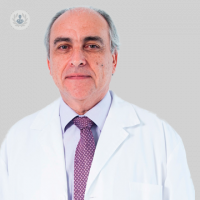The ozone in the treatment of spinal canal stenosis
Written by:Spinal canal stenosis is one of the most common diseases spine, causing pain in the back (lumbar area) and in the legs, especially when standing and walking, forcing stop and sit.
 The most common cause is lumbar vertebral arthritis, which, although a benign disease can not be cured and will evolve slowly, making it increasingly difficult to walk.
The most common cause is lumbar vertebral arthritis, which, although a benign disease can not be cured and will evolve slowly, making it increasingly difficult to walk.
The characteristic symptom is the pain in the back and, especially in the legs when walking, causing a progressive decline in the quality of life of patients. The relief is achieved to stop and sit down, but reappears when you start walking (claudication) again.
Although usually the leg pain appears gradually, sometimes it can be abrupt and sudden. In some patients, the pain is accompanied by numbness in the legs, and sometimes even a sense of loss of strength.
Depending on the time of onset and severity of symptoms, the treatment may be from physical exercise and epidural injections to surgery to remove the compression of nerves caused by stenosis. However, aggressive intervention and anesthetic risk not allow sometimes that therapy.
To reduce pain, the alternative to surgery are infiltrations in the spine, normally performed by administering cortisone derivatives. Therefore, the possibility of causing undesirable side effects, especially in elderly patients, sometimes diabéticosohipertensos age.
An alternative treatment for epidural steroid injections is the administration of ozone. Ozone is a gas with anti-inflammatory and antioxidant properties that have proven effective for many years in osteoarthritis of joints (knee, hip, shoulder, hands ...) in paraspinal muscle aches and back pain and sciatic pain for hernias or disc protrusions.
Infiltration of ozone in the treatment of spinal canal stenosis yielding results similar to those obtained with the use of cortisone efficiency, but without the side effects thereof.
Treatment consists of two injections made on an outpatient basis in a range of 7-15 days including. Sometimes, a third is required to increase the relief and prolong its duration.
The administration technique is through an epidural puncture performed with the usual aseptic rules in a suitable space for it, in the same facilities of the query.
20-30 minutes after being drawn in the same table where the procedure is performed, the patient is discharged. If the treatment is effective, it must be repeated, probably last 4-6 months.
The infiltration of ozone may not always effective, as with all treatments for osteoarthritis, but the lack of better alternatives places it in front of nonsurgical treatment for incapacitating pain management in patients with stenosis.


